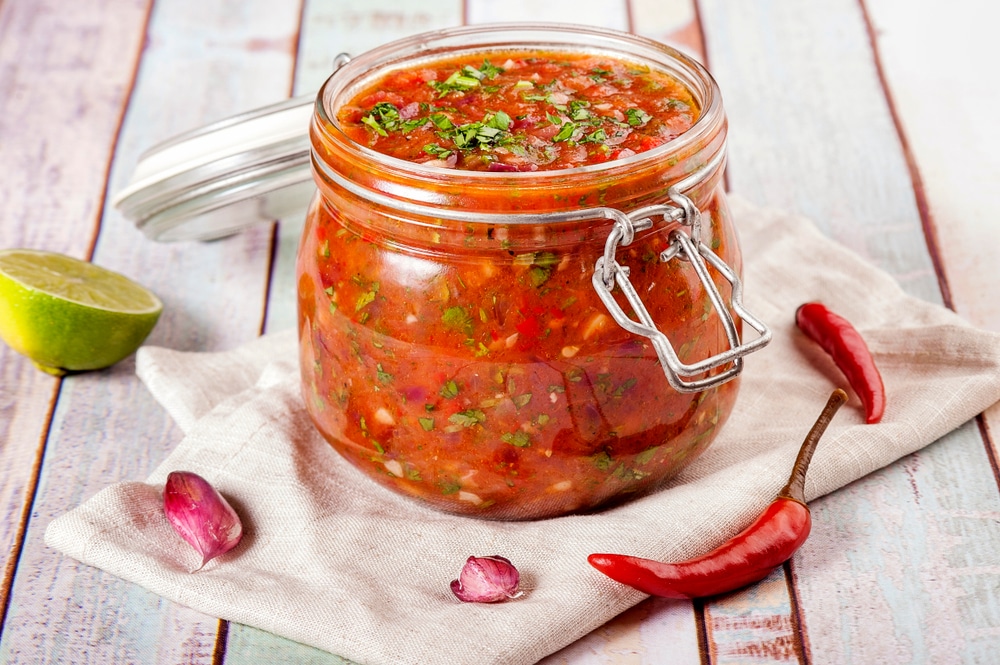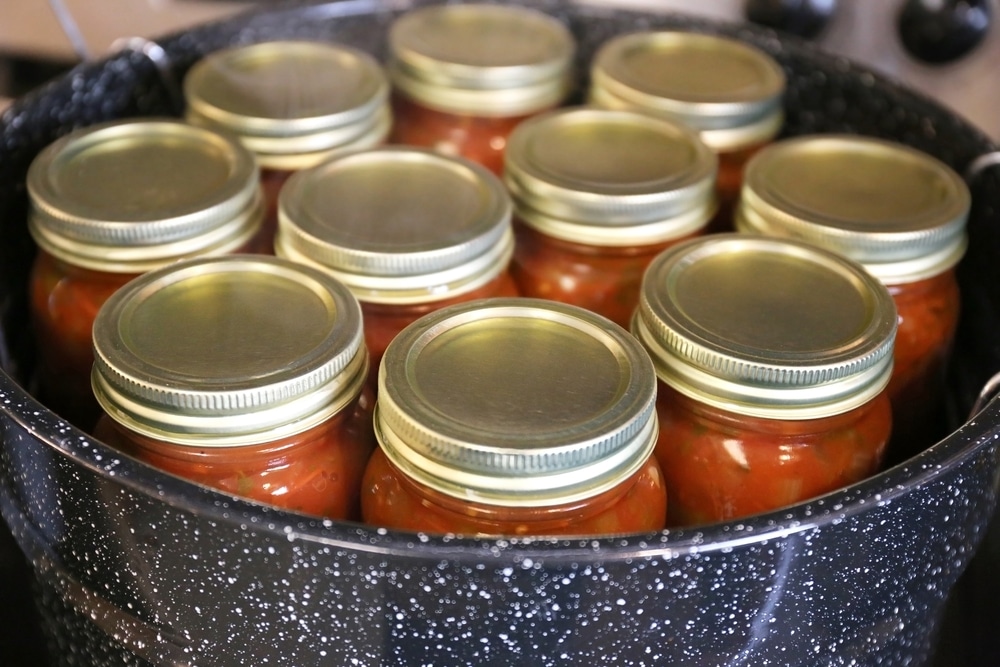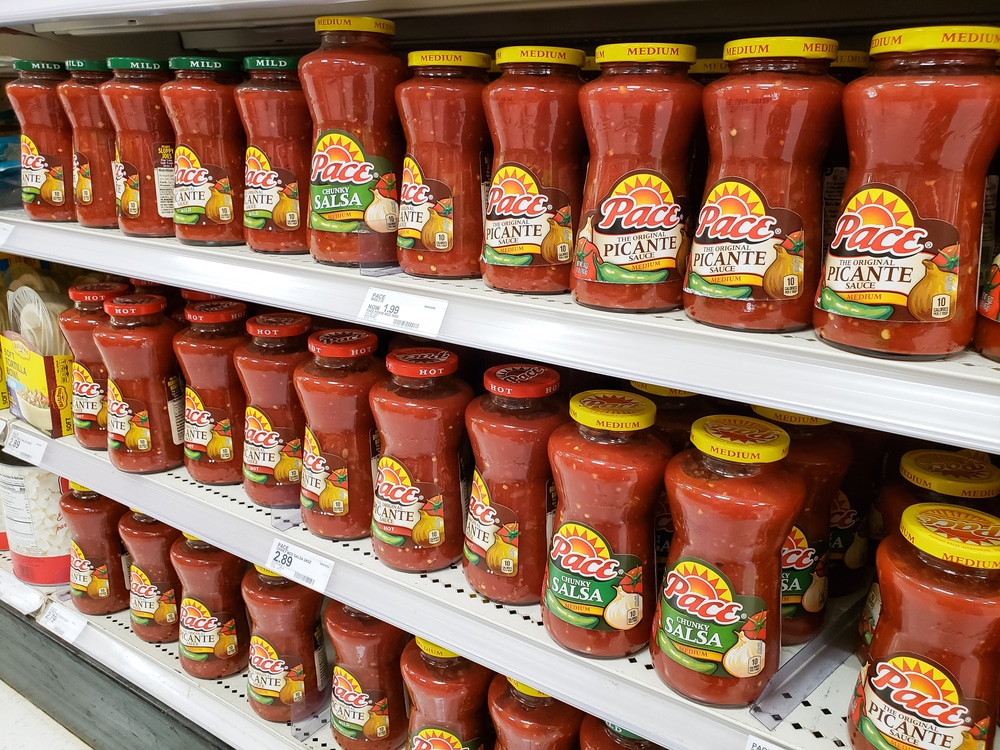Can you freeze salsa? Yes, freezing salsa is a great way to preserve it. If properly stored, Salsa can stay frozen for 2 months, although it is likely to lose taste the longer it stays in the freezer.
Salsa is a versatile Mexican sauce that can revitalize anything from chips to dessert.
In this article, we’ll be discussing some ways you can use frozen salsa, as well as questions that you may have about this delicious food.
How to Freeze Salsa

Before we start, it’s important to remember the content of salsa. There are a variety of different salsas, but fruits and vegetables are mainstays, with beans and herbs being thrown into the mix as well.
If you’ve ever tried to freeze fruits or vegetables, well, you know what you may be dealing with. Once thawed, you won’t recognize the food you left in the freezer. And the more water these fruits and vegetables contain, the worse the result.
Which may make you wonder, “Is it a good idea to freeze a liquid concoction full of watery fruits and vegetables?” Done properly, yes. It is a perfectly good idea. Though texture and consistency may somewhat change due to the factors mentioned above, it will preserve its great taste.
Of course, it might be easy to freeze store-bought salsa. But can you freeze homemade salsa? Absolutely! And we’ll be covering the freezing of both homemade and store-bought salsa.
How To Freeze Homemade Salsa

If you made the salsa yourself, there is a process you’ll have to follow for optimal results.
If you know you’ll be freezing your salsa after the initial serving, it may be wise to use fruits and vegetables that don’t contain as much moisture. Either way, you will want to remove as much liquid from the salsa as possible before freezing.
First, drain the salsa through a strainer. The liquid that is strained will not be discarded! Once you have strained as much as possible, store the liquid portion of your salsa in a separate container to be frozen.
This will allow the solid components of your salsa to freeze separately with less moisture present, minimizing the impact freezing will have on them. The liquid can then be thawed and re-combined with the thawed fruits and vegetables later.
After you have strained the liquid, pour your salsa into a pan and boil the contents. This process will further reduce the moisture present.
Once brought to a boil, lower the temperature and allow the salsa to simmer. This step will prevent the heat from burning your sauce. The simmer will need to be maintained for about 45 minutes, enough time to thicken the mixture.
When this is done, remove the pan and allow the salsa to cool completely. You can add the cooled salsa to a container or bag. A bag may be ideal since the contents can then be laid flat, and it will allow for quicker freezing. If you are freezing your salsa in a bag, make sure to remove any air but be careful not to ruin the solid components of your creation.
There is a very important note to consider if you are using a container, especially if it is made of glass. Even after the steps you have taken to reduce the water content, salsa contains moisture. This means it will expand when frozen. If there is no room in the container for this expansion, there is a danger of the container bursting.
In order to avoid this, when freezing salsa in a container, leave at least one inch of space above the salsa in the container. You’ll be glad you took note of this vital step!
How To Freeze Store-bought Salsa:

Freezing salsa you have purchased is a little easier than freezing home made salsa.
If the salsa is in a sealed container or can, do not freeze the contents immediately! These salsas have been pressure sealed, which means there is no extra space within the container. With store-bought salsa still having quite a bit of liquid content, freezing in these sealed containers will cause expansion and possibly explosion.
When getting ready to freeze salsa you have purchased elsewhere, make sure to open the container first to relieve it of pressure. Once this is done, just make sure there is at least an inch or so of empty space in the container, just like you would with homemade salsa.
You can also store the salsa in a freezer-safe bag, gently laying the contents as flat as possible and ensuring there is little to no air inside.
How Long Does Salsa Last in the Freezer?
Frozen salsa lasts for quite a long time. However, it is important to note that the longer your salsa is frozen, the more its contents will change. 2 months is a safe timeline for preserving your salsa and its quality. Past that timeframe, your sauce will start to taste and feel very different.
Of course, the longevity of your frozen salsa depends heavily on how it has been stored, so make sure that you follow our guide to freezing salsa if you want it to last as long as possible!
How to Tell if Frozen Salsa is Bad
Salsa, as a culinary combination of fruits and vegetables, can easily go bad. Change in appearance is usually a good indicator of spoiled salsa. It could be a change in color or texture or signs of mold. If it emits any odors, this is also a sign to dispose of your salsa.
This goes without saying when it comes to store-bought salsa, but even more so with homemade salsa. Homemade salsa does not contain preservatives. In addition, the liquid content of your fresh fruits and vegetables is prone to spoiling if not properly stored.
Freezing your salsa is perhaps the best way to ensure the safe storage of your creation while preserving the flavor. Of course, this doesn’t prevent spoiling completely. As we pointed out earlier, you ideally want to keep your salsa frozen for no more than about two months.
How To Use Frozen Salsa
Salsa has a variety of flavor properties, which makes it very versatile.
But when it comes to freezing, some salsa recipes are better than others. The contents will largely determine this, as some fruits and vegetables are more prone to flavor and texture changes when frozen.
So let’s take a look at some of the best salsa recipes that can easily be frozen and still taste amazing!
1. Pico de Gallo
Pico de gallo is one of the most popular salsa recipes, with good reason. Because there is no actual cooking involved, the texture and flavor of the fruits and vegetables remain intact. The making of this salsa is also very easy.
The recipe is very simple. Typically, pico de gallo contains equal parts tomatoes and onions. Then, it is made even more flavorful with cilantro, lime juice, and, depending on preference, peppers. Simply dice the ingredients and place them in a bowl.
The advantage of pico de gallo when it comes to freezing is that there is very little liquid to strain out. However, the tomatoes and onions used do contain water. So if they are not properly frozen or frozen for too long, the flavor and texture may be ruined.
2. Fruit Salsa
Fruit salsa is another popular variation of salsa. Because of the contents, certain fruit salsas may go well with salads or chips, and some are even desserts.
Most fruit salsas used as dips tend to resemble pico de gallo but with the addition of fruits. Depending on the fruit used, they may be fantastic chip companions, toppings for a meat dish, or eaten as or with a dessert item. The possibilities are endless.
Like pico de gallo, this salsa is easier to freeze because most fruit salsa variations are void of a liquid sauce. However, along with the usual tomatoes that serve as a base ingredient, many fruits contain water. Chopping up the fruit into smaller pieces will help with the freezing process.
3. Salsa Verde
Another very popular salsa recipe is salsa verde. Unlike most salsa recipes, salsa verde utilizes tomatillos instead of tomatoes as their base ingredient. Other ingredients used are onions, peppers, lime, and cilantro.
The process for creating salsa verde is also simple. The only cooking involved is with the tomatillos, which can be boiled, broiled, or pan-roasted, depending on your flavor preference. Once the tomatillo is cooked, throw it into a blender with the other ingredients.
Salsa Verde is also easier to freeze than traditional salsa. All of the ingredients are blended, so you can freeze this salsa just like any other liquid without fear of ruining texture or flavor. It’s best to freeze salsa verde quickly to preserve maximum flavor, so freezing flat in a freezer-safe bag is ideal.
More on Food Freezing:







